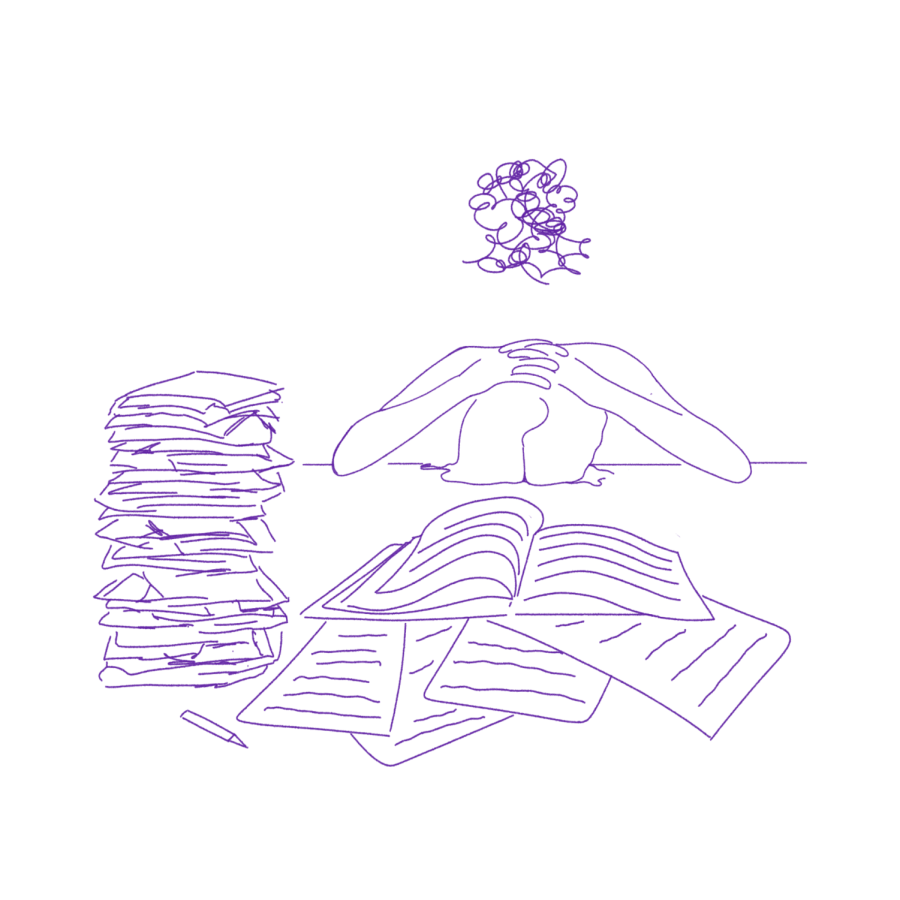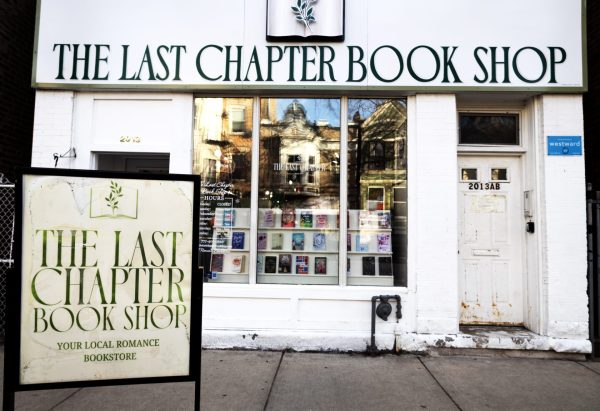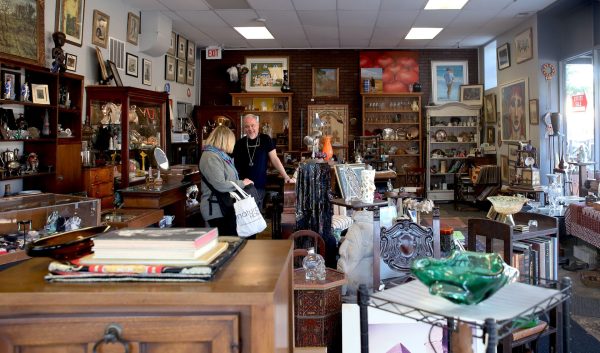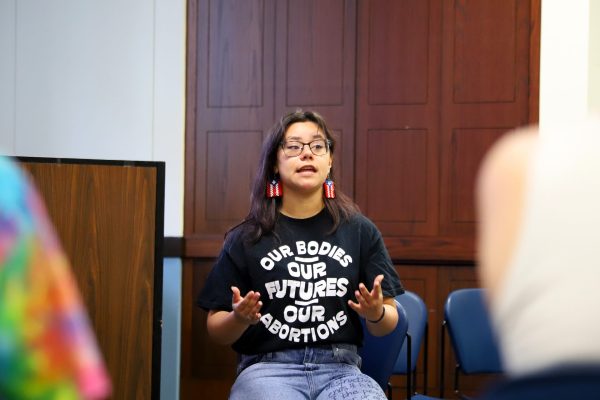Colorful coping: Visual journaling provides students therapy in stressful times
Alicia Goluszka for The DePaulia
Freshman Maia Palomar sits on a small purple and white chevron area rug, spreading her art supplies and various paint with paper swatches out across the floor. She leans back on her dresser and starts creating. Occasionally she glances up at the nearby window, looking out at the night sky as she draws. In the background Elton John is playing and the floor becomes more covered and disorganized as the process continues. Palomar said this is the process of visual journaling to her, and while it can seem chaotic from a distance, it is relaxing to her.
“For as long as I can remember, I’ve relied on art to be able to express myself,” Palomar said. “My art feels like a direct extension of myself, making it easier for me to put a drawing on a page that’s open and honest as opposed to struggling to find the right words to say.”
Visual journaling is one of the many ways artists can express themselves, but it is also an experience open to everyone. Visual journaling is the process of a creative way to express and record one’s experiences, feelings and thoughts. The process is similar to journaling, but the person begins by drawing what their stressors, worries or thoughts are, or anything that helps them understand what they are feeling. Usually it contains drawings, sketches, hand lettering, doodles or even clippings of photographs and magazine cutouts. It is like a diary in that it is a very personal practice — it is not meant to be criticized.
Freshman Avalyn Krastin said she does visual journaling because it allows her to have a record of her past emotions and what was pictured in her mind when she was feeling that way. “I find journaling itself helpful because it’s nice to have proof of my feelings and it’s a fun way to express my feelings as well.”
Katie Hoffman, DePaul alumna and occupational therapy doctorate student, said artists benefit from visual journaling because it gives them a way to put how they feel on paper without the stress of solely writing. “As an artist, I use my work to look inward, then manipulate and interpret my thoughts and feelings and express them symbolically,” she said.
Though artists are more likely to partake in this type of journaling, Clarissa Todd-Adekanye’s study, “Visual Journaling for (Self) Education Through Art Education,” said this type of journaling is beneficial to people as a whole because it allows them to bring their imagination into the physical world, allowing them to process their emotions more effectively. The study also says art making in visual journaling can be used as a tool for holistic healing, and by supporting expression through creativity and imagination, the formation of identity and reservoirs for healing can be built and influences students’ ability to build self-confidence and self-awareness that can sequentially lead to self-healing.
Palomar said she agrees visual journaling can help a person build their self-awareness. She said the process helps her understand her anxiety and general emotions, allowing her to better understand herself as a whole.
“I jokingly say art and journaling keep me sane, but I think that’s a good bit true,” Palomar said. “I’m a very private person, I find it hard to fully open up to people unless I truly trust them. Even then I feel a guilt towards putting so much on them, let alone the fact that I’ve avoided processing my emotions for a long time. I also have pretty significant anxiety. Having a drawing to look back at makes all my emotions or anxiety real, I can visualize it somewhat, and in some ways it helps me sit with it and work through it.”
Krastin said visual journaling helps her process her emotions. “It helps me focus on one thing while I’m trying to process,” Krastin said. “I have ADHD and I find that writing in general helps me with focusing instead of bringing other factors into my stressors. I write often and I find that drawing my funny little objects makes it easier to calm down and process any feelings I may be having.”
Though Krastin and Palomar said they benefit from the process, not everyone will have the same experience — especially if someone lacks seeing an image of their worries or thoughts. “Despite this not being the best method for everyone, it is absolutely worth a try and valid as a coping mechanism, hobby and skill,” Hoffman said.
But, if someone does struggle with not being able to picture exactly what their thoughts are, doodles are a common filler of the space. Sometimes people draw similar doodles in their journals; Krastin said flowers make a continuous appearance in her journal, even if they do not relate to what she is journaling about.
“I would say I draw a lot of flowers,” Krastin said. “I think I do this because it makes me think about gardens and springtime. With winter approaching, the springtime is a reminder that like plants, everything grows and has room for growth.”
Krastin said doodles are a good starting point for a beginner in visual journaling. She said she still relies on her doodles to help her process what she wants to create or write about.
“Write and make whatever you want,” Krastin said. “No one can judge what you create because it is yours and yours only. If you think it makes you feel better, draw the most lopsided, funny and cute looking thing that you can. It’s your choice to write with it or not.”
Palomar said she encourages people to start visual journaling, and agreed with Krastin that sketches are a good starting point. She emphasized there is no exact way to go about visual journaling, it is a private and personal practice that people can make their own.
“If you want to begin visual journaling, the best thing I can say is go for it,” Palomar said. “There’s no right or wrong way to start, and there’s no structure you have to keep it to. The hardest part is beginning, or at least it was for me. I wanted the journal to have ‘good’ pieces in there, I wanted to look clean and neat, and if that’s the style you want, there’s nothing wrong with that. About a few months into it, I realized that ‘clean and neat’ weren’t going to help me in the long run — censoring myself and being so picky with what I made to vent wasn’t truly venting. No matter what, the journal will evolve with you, you’ll figure out what does or doesn’t work, and at the end of the day, it’s your journal.”












